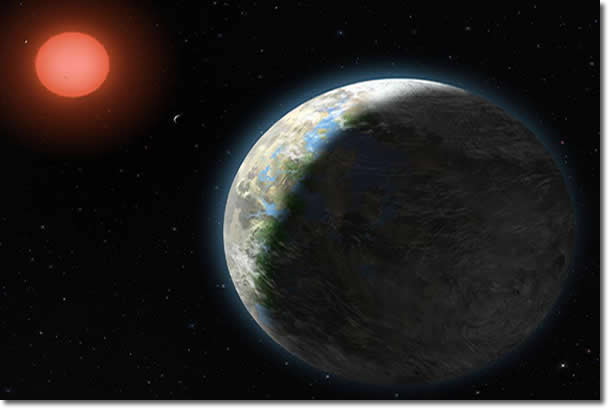For several decades, scientists have been searching the heavens for signs of life, or at the very least, planets similar to Earth. The recent discovery of the Earth-like planet Gliese 581G orbiting the star sun Gliese 581 has hopefully set into motion a new perspective on the existence of planets similar to our own. Indeed, what does this mean for humanity and the community of science?
Not since the search for extraterrestrial intelligence began in 1959 with the creation of the Search for Extraterrestrial Intelligence Institute, better known as SETI, has the science of discovering planets within the range of what is known as a "habitable zone” for life to exist, ever been more exciting. The “habitable zone” is the comfortable distance between a sun and a planet, which affords a hospitable climate such as our own, for life to evolve. Today, with tools like the Hubble telescope, mankind is peering deep into space and back in time to see the very beginnings of how life in the universe began.
This newly discovered planet is estimated to be three times the size of Earth, but does not rotate on an axis, which means it does not have seasons such as we do, only a dark side and a light side which is constantly lit by its sun. Since 1995, over 500 similar planets have been discovered, however, they are all mostly thought to be gaseous without earth like matter. Planet Gliese 581G is very near to Earth compared to other solar systems like our own. It is 20 million light years away, which means one would need to travel for 20 million years at the speed of light, or 186,000 miles per second—to get there. This makes it almost impossible for humans to achieve at this time, considering the mass of a light particle, the mass of the spacecraft required, and the time needed to get travellers from here to there before they grow old and die. In fact, it may take generations of humans travelling in space to achieve such a goal.

This artist's rendition shows the Gliese 581 system and its host star. The red dwarf star is only 20 light years from Earth. The large planet in the foreground is the newly discovered GJ 581g, which has a 37-day orbit right in the middle of the star's habitable zone, and is only three to four times the mass of Earth, with a diameter of 1.2 to 1.4 times that of Earth. Image: Lynette Cook/ NASA
One thing is certain, humanity cannot sustain itself on planet Earth forever, given the fashion in which we are abusing this self-sustaining biosphere. The human race will need another planet to exploit within the next 150 to 250 years, if mankind is to survive in the universe as a species.
Human beings are not the only problem. Sixty million years ago an asteroid hit the earth with such tremendous force, it caused mass extinctions. This is entirely possible today. At the moment scientists are watching hundreds of comets and asteroids with the Near Earth Object Program, better known as NEAR.
For example, on November 6, 2009, a 7-metre size asteroid passed very close to Earth at 14,000 kilometres, one of the closest passes recorded. Although, not known as a “planet killer,” Earth is frequented by many other such asteroid passes which signal a warning to mankind: such an event which occurred 65 million years ago can repeat itself.
In addition, some scientists believe global warming or climate change is not caused by man, but is a natural phenomenon. Indeed, the earth has been warming for 15,000 years. Is this because the sun is heating-up as some believe, or is this warming trend caused by pollution generated by human activity? No one is certain. After all, the sun is the fundamental source of both life and heat on Earth.
The main point to consider is that Mother Earth will not sustain human civilization forever. And if we are to survive as a species, we must invest in space sciences, not only for the spin-off technologies which will benefit science, medicine, and business, but also provide hope for future generations of humans.
Indeed, finding a new habitable Earth-like planet and funding the research and development needed to bring those new technologies to light, is not only a necessity for the survival of man, but for the evolution of everything we hold dear on planet Earth. Because in another 150 years if trends continue, planet Earth is going to become a very inhospitable place for those creatures both human and non-human animals, who live on it.
So, the next time you look up at a star in the sky, take a few moments to see the potential; and remember, there could be someone or something looking back at our star in the sky and wondering the same thing: Does life exist beyond, and if so—how do I get there?


